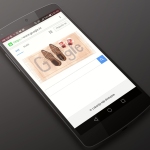Why Google Ads are not generating leads?
Date Posted: May 21, 2024
Investing in Google Ads can be a powerful strategy for lead generation. However, encountering a situation where your campaigns aren’t delivering the desired results can be frustrating. If you’re wondering why your Google Ads aren’t generating leads, you’re not alone. This blog post delves into the most common reasons behind lacklustre lead generation and offers practical solutions to get your campaigns back on track.

Common Reasons for Underperforming Campaigns
Several factors can contribute to Google Ads failing to generate leads. Here are some key areas to investigate:
- Targeting Misalignment: Your target audience is the foundation of a successful campaign. If your targeting is too broad or misaligned with your ideal customer profile, you’ll reach irrelevant users unlikely to convert.
- Weak Keyword Strategy: Choosing the right keywords is crucial. Irrelevant or overly broad keywords might attract a high volume of clicks, but if they don’t reflect genuine user intent, they won’t translate into leads.
- Uncompelling Ad Copy: Your ad copy is the first impression potential leads have of your brand. Generic or poorly written ads will fail to capture attention and drive clicks.
- Landing Page Disconnect: The landing page users arrive at after clicking your ad is critical. If it’s not optimised for conversions, lacks clarity, or doesn’t align with your ad message, users will bounce without taking action.
- Conversion Tracking Issues: Ensuring your conversion tracking is set up correctly is essential. Without proper tracking, you won’t have accurate data on how many leads your ads are generating, hindering campaign optimisation.
- Insufficient Budget: A limited budget can restrict your campaign’s reach and visibility. If you’re not spending enough, your ads might not be seen by your target audience, leading to a lack of leads.
- Highly Competitive Landscape: Certain industries are inherently more competitive in the online advertising space. This can drive up costs and make it challenging to stand out from the crowd.
Analysing Campaign Performance Metrics
Before implementing solutions, it’s crucial to diagnose the root cause of your underperforming campaigns. Google Ads provides a wealth of data to help you identify areas for improvement. Here are some key metrics to analyse:
- Impressions: This metric shows how many times your ad was displayed. A low number of impressions might indicate targeting issues or an insufficient budget.
- Clicks: The number of clicks your ad receives. A low click-through rate (CTR) suggests your ad copy might not be compelling or relevant to your target audience.
- Cost-per-Click (CPC): The average amount you pay each time someone clicks on your ad. A high CPC could be caused by irrelevant keywords or a competitive landscape.
- Conversion Rate: The percentage of users who click on your ad and take a desired action, such as submitting a lead capture form. A low conversion rate suggests a disconnect between your ad and landing page or an issue with the landing page itself.
By analysing these metrics, you can pinpoint where your campaign is falling short and identify the specific areas that need attention.
Solutions to Get Your Lead Generation Flowing Again
Once you’ve identified the culprit behind your lacklustre lead generation, here are some solutions to get your campaigns back on track:
- Refine Targeting: Ensure your targeting settings are laser-focused on your ideal customer profile. Consider demographics, interests, and online behavior to reach users actively searching for what you offer.
- Optimize Keyword Strategy: Conduct thorough keyword research and focus on relevant, long-tail keywords with high buyer intent. Utilize tools like Google Keyword Planner to identify the best keywords for your campaign.
- Craft Compelling Ad Copy: Write clear, concise ad copy that highlights the benefits of your product or service and includes a strong call to action (CTA). Focus on user needs and create a sense of urgency to encourage clicks.
- Align Landing Page with Ad Message: Ensure your landing page seamlessly connects with your ad copy and offers a clear path for users to submit their information. Maintain a consistent visual theme and prioritise user experience.
- Verify Conversion Tracking: Double-check your conversion tracking setup to ensure it’s capturing leads accurately. Use Google Tag Manager for seamless integration with your landing page.
- Adjust Budget: If necessary, consider increasing your budget to reach a wider audience and improve ad visibility. However, always maintain a focus on return on investment (ROI).
- Creative A/B Testing: Experiment with different ad variations, headlines, and visuals to see what resonates best with your audience. Continuously test and refine your ad creatives for optimal performance.
Additional Strategies for Lead Generation Success
While addressing the issues mentioned above can significantly improve your lead generation, here are some additional strategies to consider:
- Leverage the Power of Google My Business: For local businesses, optimising your Google My Business listing can be a game-changer for lead generation. Ensure your listing is complete with accurate information, positive reviews, and high-quality photos.
- Retargeting Campaigns: Re-marketing to users who have previously interacted with your website can be highly effective. This allows you to stay top-of-mind and capture leads who might not have been ready to convert during their initial visit.
- Content Marketing Integration: Develop valuable content relevant to your target audience and promote it through your Google Ads campaigns. This establishes your brand as an expert in your field and fosters trust, leading to more qualified leads.
- Utilize Lead Capture Forms Effectively: Keep your lead capture forms concise and request only essential information. Offer valuable incentives like ebooks, webinars, or discounts to entice users to submit their information.
Continuous Optimisation is Key
The key to successful lead generation with Google Ads lies in continuous monitoring, optimisation, and adaptation. By analysing campaign data, diagnosing issues, and implementing the solutions outlined above, you can transform your Google Ads campaigns into a powerful lead generation engine. Remember, the online advertising landscape is dynamic, so stay informed about the latest trends and best practices to maintain a competitive edge.
By combining these strategies with a data-driven approach and a focus on user experience, you can turn your Google Ads investment into a steady stream of qualified leads, ultimately achieving your business goals.




